Depth of field, how it applies in food photography
Hi everyone. Today we’re going to talk about depth of field and how it effects your food photography. How to change your depth of field and what factors have greatest impact on your depth of field. Just for reference, I may use DOF instead of writing it out in full.

What is depth of field?
In simple terms, it’s how much of the photograph is in focus or sharp. The less in focus the shallower the depth of field (DOF). More in focus, the deeper the DOF. Think of it as how far into the picture is sharp. Is it just a little way (shallow DOF) or is it sharp from the foreground to background (deep DOF) Probably somewhere in between in food photography.
Two things affect your depth of field. One you probably know and the other, not so much.
- Aperture: The lower the f-stop the narrower the DOF. Higher the f-stop the deeper the DOF.
- Proximity To Subject: This is the one most folks getting into photography don’t realise. The closer you are to the subject, the shallower your depth of field will be at any given f-stop. This means if you’re shooting at 100mm focal length at, say, f3.5 from 1½ meters away from the subject you will have X amount in focus. Now you take a 50mm lens and take the same shot, you have to move closer to the subject to keep a similar framing (how much the subject fills the frame). To get the same amount out of focus with the 50mm, you will need to close down your aperture, dial in a higher f-stop, to compensate for your close proximity.
How do I use depth of field in my food photography?
There are several ways we use DOF in food photography or any photography in fact.
- To show the viewer what’s important: As humans, which I presume most of us are, as we look around at different things, our amazing eyes focus on what we’re looking at. Typically the most important part of the scene is in sharp focus. Therefore we know our photographs have to be sharp at the point of interest, usually our subject, because that’s what we’re used to in daily life. This is also a big part of the styling of food photography, placing elements into the picture to enhance and not distract.
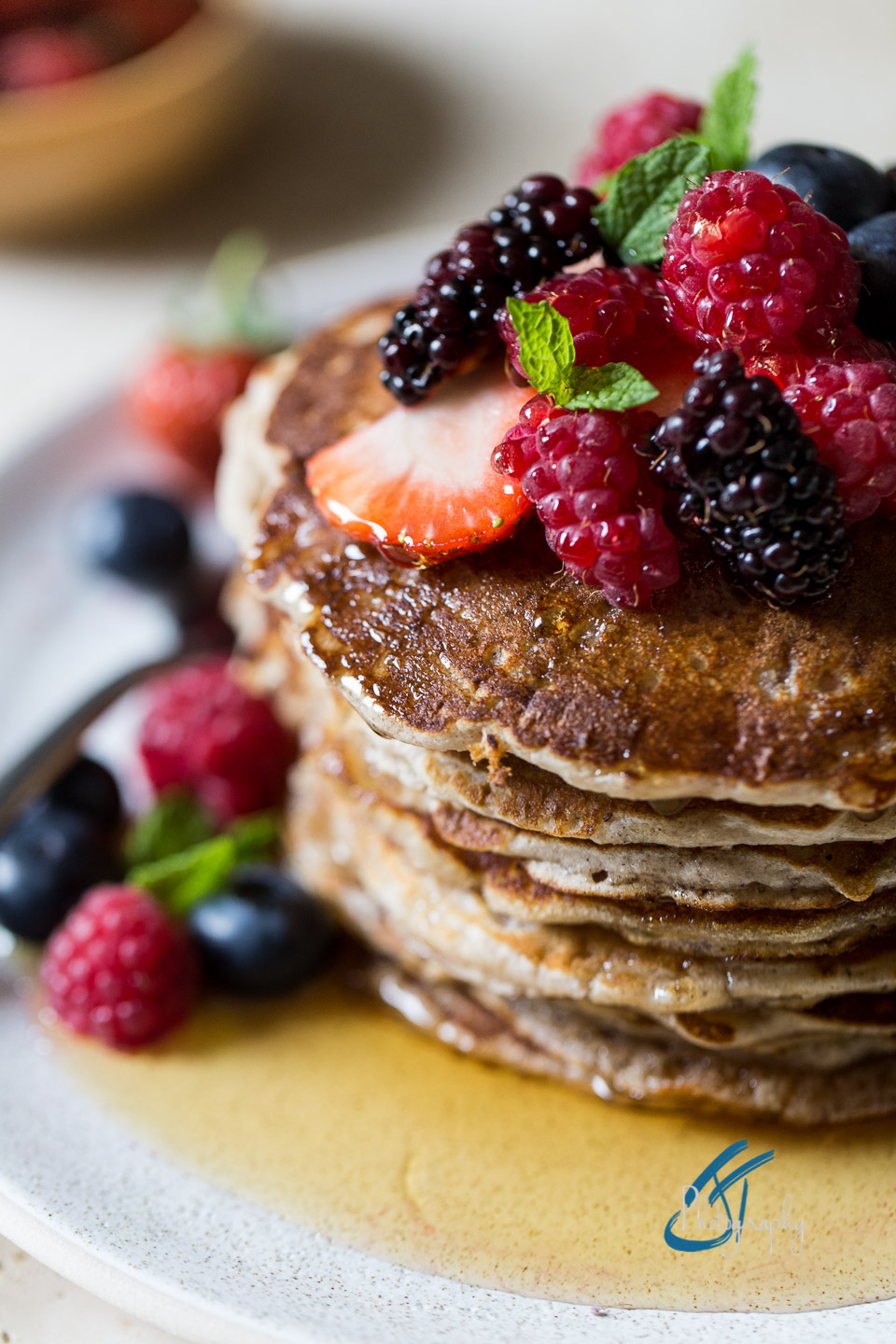
- Creating a pleasing background: When you create a photograph with a shallow DOF we’re deliberately making any elements in front and behind the main subject, and focus point, nice and soft or out of focus. This stops less relevant aspects of the image competing with the main subject, once again telling the viewer what’s most important.
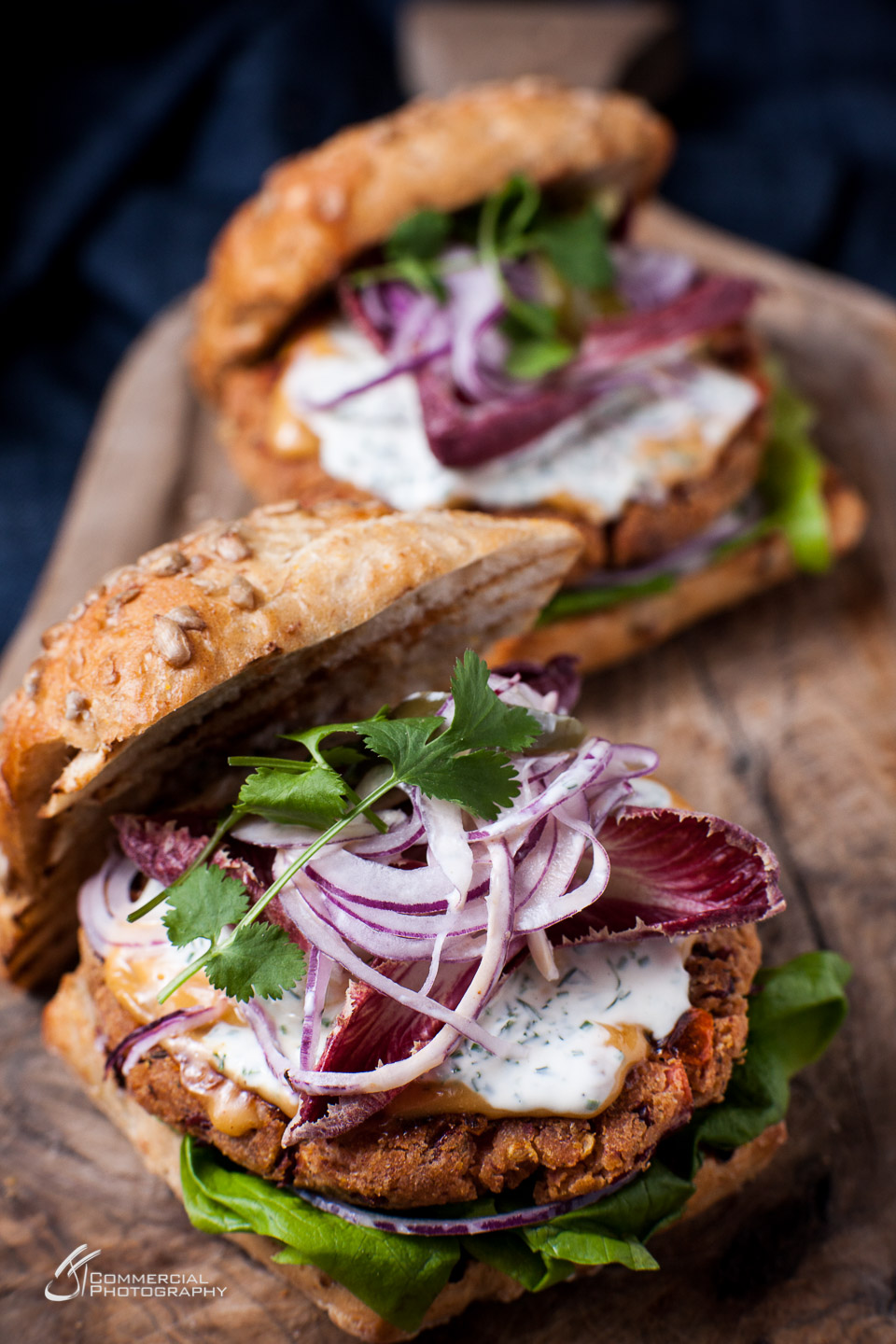
- Improving the look of unpleasing elements: Sometimes you have a background or items making up a background, which aren’t overly pleasing. Their outline or general texture maybe good, but you don’t want to show off exactly what they are. There could also be things in the background which aren’t connected to the shot but when out of focus could make a nice graphical element. For example, a portrait of a chef at a location other than his/her restaurant, or plants growing in the background, textured wood which gives a feel of a rustic barn but is actually placed in the shot to give a graphical background. Throwing the background out of focus turns the location they’re in soft and graphical, therefore having a more general but more widely useable image.
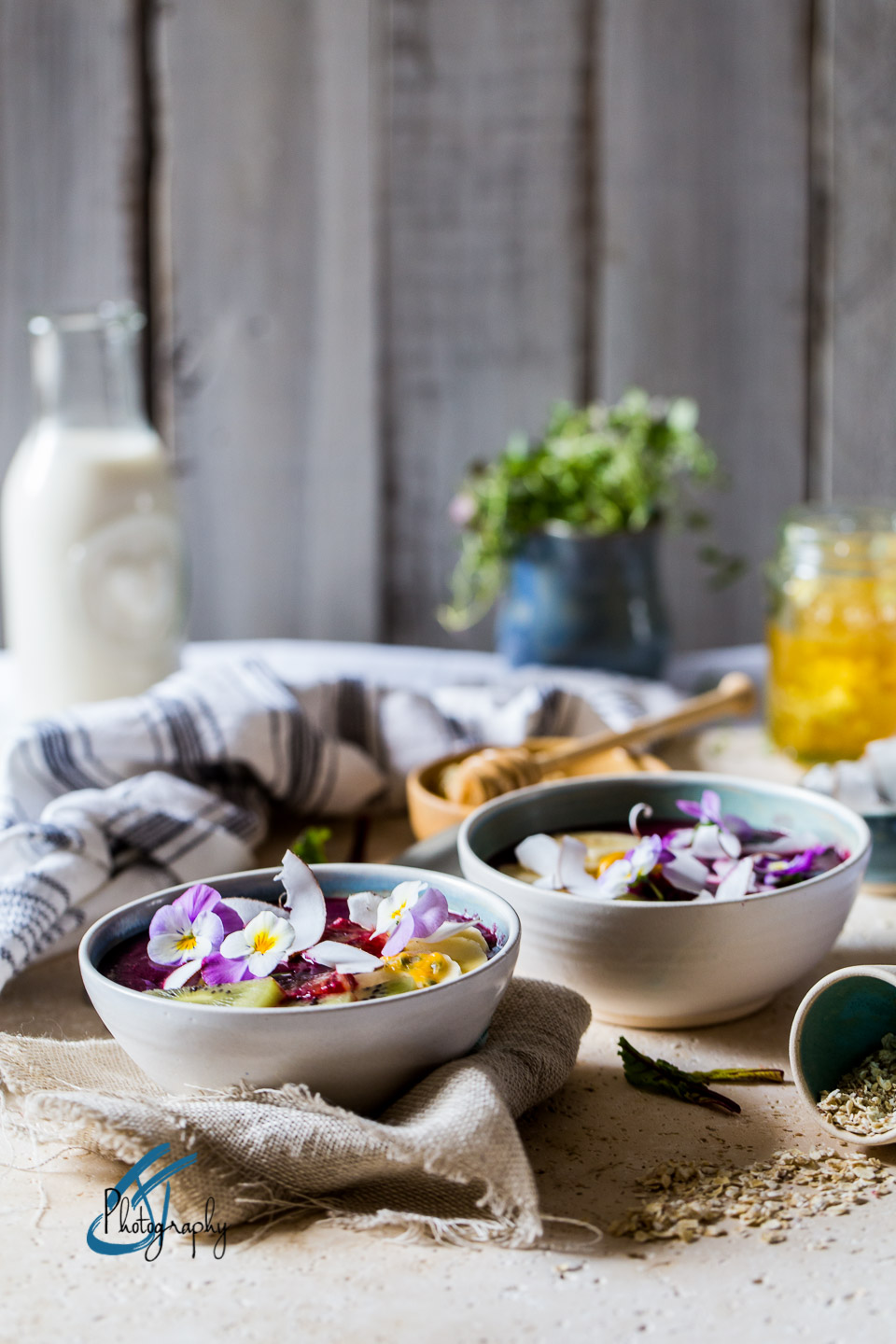
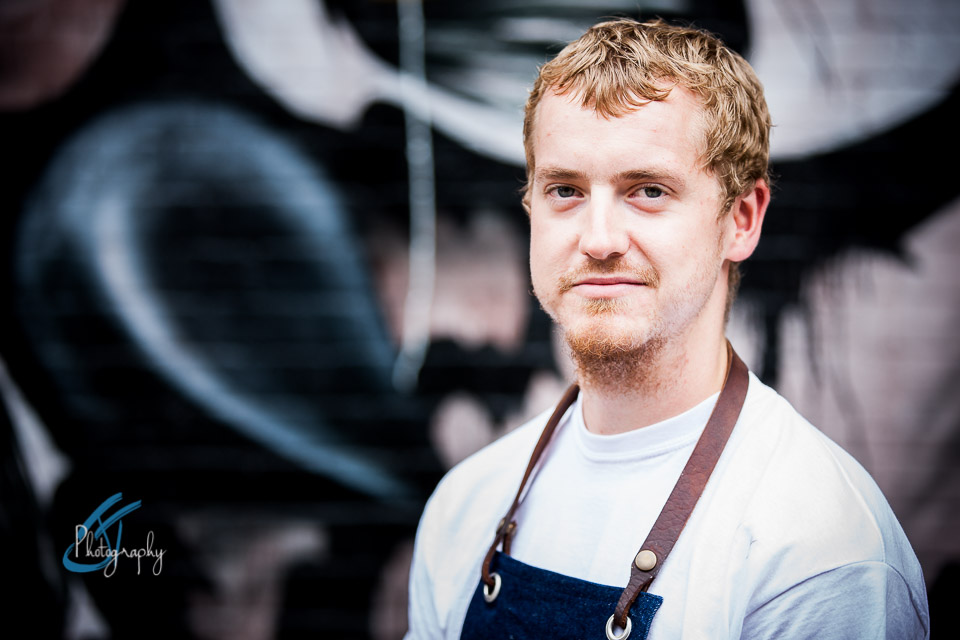
- Top-down: On these shots taken from above, I tend to have a deeper depth of field keeping all of the image nice and sharp. Somewhere in the f7.1-f10 range. This is especially necessary when there are greater variations in height of the food. It’s not always the case that I want it all sharp. The joy of photography is there are no rules, just what you want to create and learning how to achieve it.
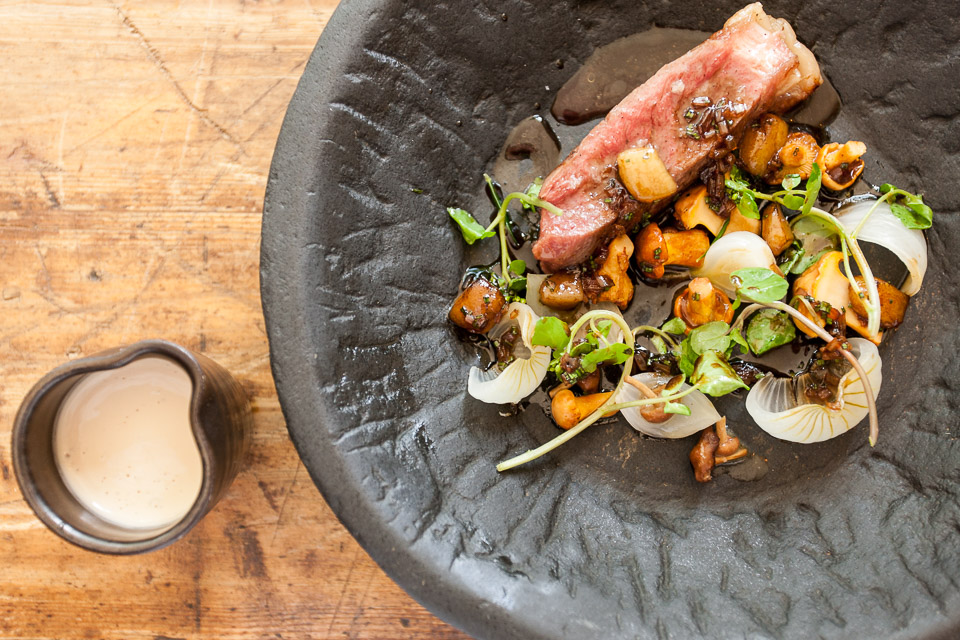
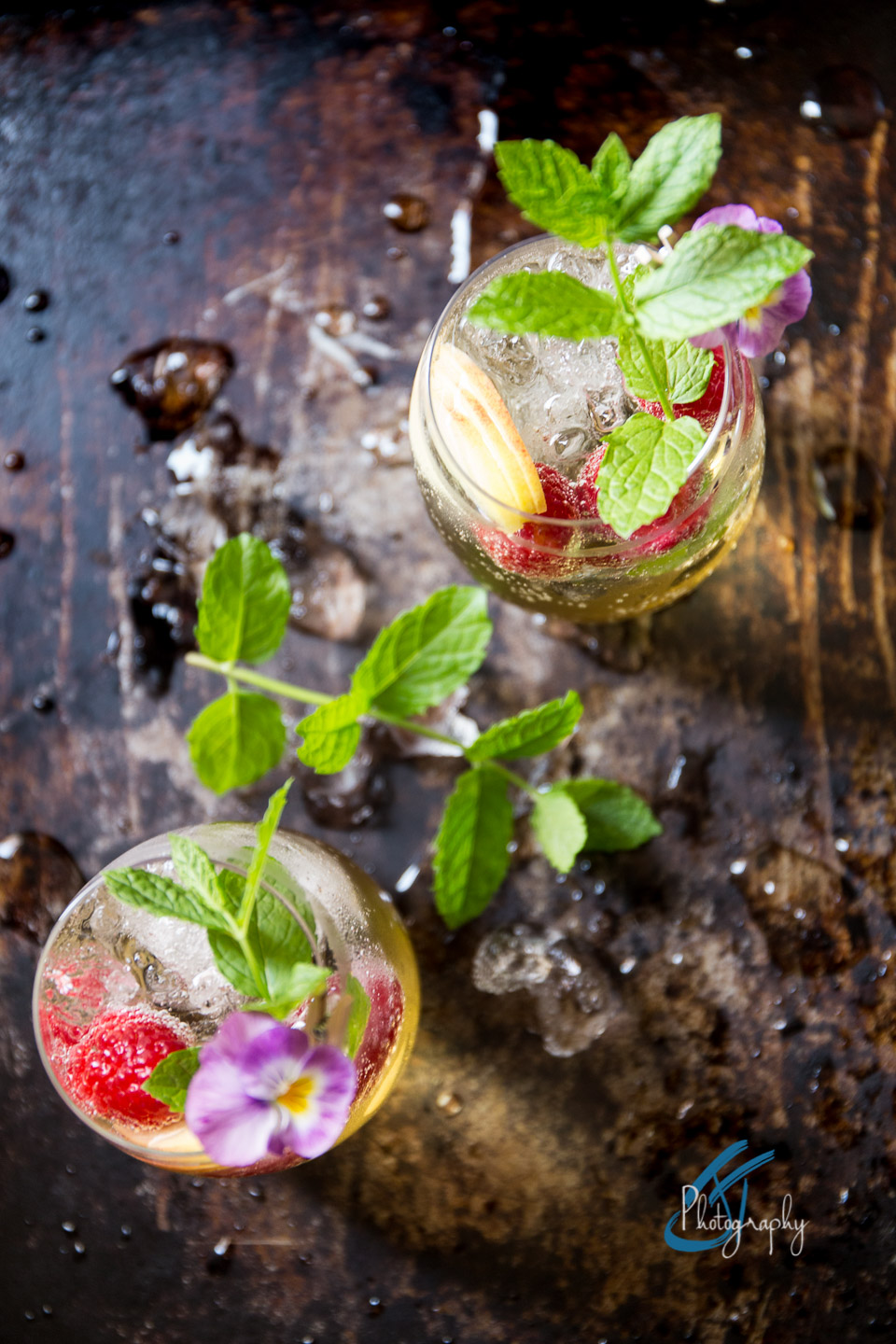
Adjusting your depth of field
Aperture
As I said earlier, the most common way to change your depth of field is to change your aperture. When you lower the f-stop (f1.4 f2 f3,5) you widen the aperture or iris of the lens. This allows more light into the camera and reduces the depth of field making less of the image, around the focus point, in sharp focus.
When you close down your aperture or iris you have a higher f-stop (f8, f10, f16) this lets less light in and more of your picture is in sharp focus around the focus point. [/one_half][one_half_last]
Distance to subject
Getting in close to the subject gives you most effect to your depth of field. Using a wider focal length lens and getting closer to the subject will decrease your DOF, compared with standing further back with a longer lens. This doesn’t mean you can’t get a tight shot with a long lens. Although unless it has a macro ability, you’ll probably be pretty limited how close you will be able to get and still obtain focus. Unless you go for the macro extension tube route.
Wrapping it up
What have we covered?
- Your camera proximity to the subject has the greatest effect on your depth field.
- The wider your aperture the shallower your depth of field will be. The narrower your aperture the deeper the DOF will be.
- Bringing both 1&2 into play and understanding how they work together will have you mastering this part of your photography.
- Sharp focus with a suitable DOF will help the viewer know where to look and what’s most important.
- A shallow DOF can make a less attractive background a lovely soft graphical piece of your photograph.
- Try to use a deeper DOF for top-down shots, keeping more of the image nice and sharp.
I hope that’s all made sense and the video demonstrates a little more clearly. Although the subject may not be the best to show depth of field, I’ve made the video and it’s up. I’ll do another that makes DOF much clearer.
Any questions or comments please leave below and I’ll see you back here very soon.
Cheers
![]()

2 Comments on “Depth of field in food photography”
You have some really great photography tips here! I love playing around with the depth of field! Thank you for sharing!
Thanks Tina, glad you found it helpful. Playing is the best way to learning.